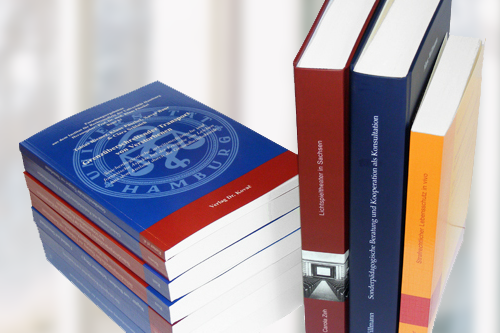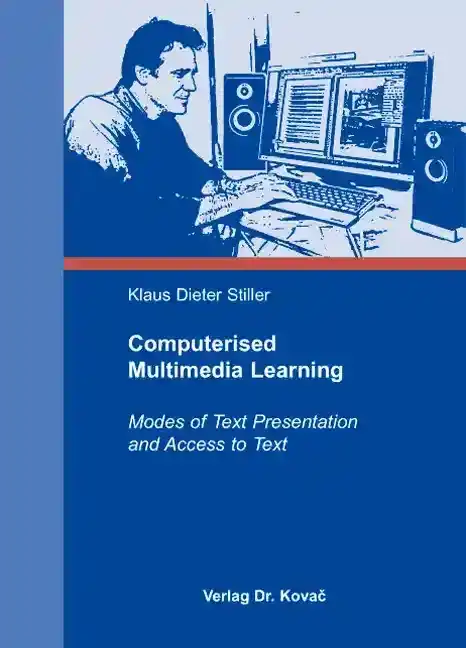Klaus Dieter StillerComputerised Multimedia Learning
Modes of Text Presentation and Access to Text
Medienpädagogik und Mediendidaktik, Band 11
Hamburg 2007, 494 Seiten
ISBN 978-3-8300-2775-1 (Print) |ISBN 978-3-339-02775-7 (eBook)
Zum Inhalt
Nowadays it is common knowledge that we undergo a lifelong learning – and perhaps teaching – process and that we live in a new age, which is dominated by information technology. This gives rise to the conclusion that computer-based information technology will play an important or even essential role in this learning and teaching arc, from the dawn until the dusk of human life.
Looking back at the field of computer-based and especially internet-based learning and information settings and research, one cannot deny that computer technology and computer-based learning scenarios have gained and still are gaining increasing importance. Although there is a long history of multimedia learning and learning with computers, knowledge about how to design instructional presentations is still deficient. This book concerns the media-specific usage of texts and pictures in computerised instructions. Medial design features and their interactions with learner features were analysed.
The first section of the book is about how medial presentations can be described and how media technology determines presentations. Relevant features of computer-based presentations are introduced. Verbal and pictorial presentation modes are discussed in terms of the aspects of code, modality and dynamics, and types of texts and pictures are introduced. Last, the case for a combined presentation of texts and pictures in instructions is described.
The second part presents a prominent theory in the field of multimedia learning: the cognitive theory of multimedia learning (Mayer). It is basedon the multiple-component theory of working memory (Baddeley), the dual-coding theory (Paivio) and the cognitive load theory (Sweller). Then, the design features and learner characteristics as well as learningoutcomes are introduced, which are in the focus of the following elevenexperiments. Empirical evidence for design effects and interaction effectswith learner characteristics is reported.
The third part reports eleven experiments about the effects of text modality (on-screen vs. spoken text accompanying pictures), redundancy (spoken vs. concurrent spoken and on-screen text accompanying pictures) and access modes (linear vs. pictorial access) as well as their dependence on prior knowledge and attitude towards computers. In all experiments, text units were paced and sequenced freely under exactly fixed or learner-determined study time.
Last, the results of the experiments are translated into guidelines. This is done in order to clarify results and to enable a transfer into practice. The results show that a pictorial access via clickable pictures is a good way to foster learning. On the other hand, spoken explanations were not always superior to visual or redundant text presentations. In some cases, the well-known effects of modality and redundancy even reversed with a higher level of prior knowledge or a more positive attitude towards computers.
Schlagworte
Computer Assisted LearningHabilitationInstructional DesignInteractivity PrincipleLifelong learningMedienpädagogikModality EffectMultimedia LearningPädagogikPsychologieRedundancy EffectIhr Werk im Verlag Dr. Kovač

Möchten Sie Ihre wissenschaftliche Arbeit publizieren? Erfahren Sie mehr über unsere günstigen Konditionen und unseren Service für Autorinnen und Autoren.
